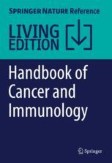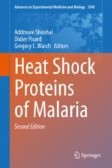Search
Search Results
-
Tenth International Symposium on the Hsp90 chaperone machine
Hsp90 is a molecular chaperone responsible for regulating proteostasis under physiological and pathological conditions. Its central role in a range...

-
Chaperone proteins: universal roles in surviving environmental stress
Chaperone proteins have crucial roles to play in all animal species and are involved in mediating both the folding of newly synthesized peptides into...

-
Canine osteosarcoma cells exhibit basal accumulation of multiple chaperone proteins and are sensitive to small molecule inhibitors of GRP78 and heat shock protein function
Osteosarcoma is the most common type of bone cancer in dogs and humans, with significant numbers of patients experiencing treatment failure and...

-
Molecular Chaperones as Therapeutic Target: Hallmark of Neurodegenerative Disorders
Misfolded and aggregated proteins build up in neurodegenerative illnesses, which causes neuronal dysfunction and ultimately neuronal death. In the...

-
Role of chaperone-mediated autophagy in the pathophysiology including pulmonary disorders
Autophagy is a highly conserved mechanism of delivering cytoplasmic components for lysosomal degradation. Among the three major autophagic pathways,...

-
Riluzole partially restores RNA polymerase III complex assembly in cells expressing the leukodystrophy-causative variant POLR3B R103H
The mechanism of assembly of RNA polymerase III (Pol III), the 17-subunit enzyme that synthesizes tRNAs, 5 S rRNA, and other small-nuclear (sn) RNAs...

-
Autophagy, molecular chaperones, and unfolded protein response as promoters of tumor recurrence
Tumor recurrence is a paradoxical function of a machinery, whereby a small proportion of the cancer cell population enters a resistant, dormant...

-
Heat Shock Proteins as Emerging Therapeutic and Vaccine Targets Against Leishmaniasis
Leishmania, an intracellular protozoa parasite, is the causative agent of a group of diseases called leishmaniasis. Clinical manifestations of...
-
A Genomic Study of the Japanese Population Focusing on the Glucocorticoid Receptor Interactome Highlights Distinct Genetic Characteristics Associated with Stress Response
All living organisms have been programmed to maintain a complex inner equilibrium called homeostasis, despite numerous adversities during their...
-
Molecular Mechanisms Underlying the Role of HSPB8 in Neurodegeneration
Heat shock proteins (HSPs) regulate protein quality control and are responsible for protein aggregation and disaggregation. Molecular chaperones are...
-
Repurposing Drugs Modulating Autophagy: Toward a New Era for the Treatment of Cancer
Autophagy is an evolutionarily conserved machinery for intracellular homeostasis via lysosomal degradation system in practically all cells in humans....
-
Iso-mukaadial acetate and ursolic acid acetate inhibit the chaperone activity of Plasmodium falciparum heat shock protein 70-1
Plasmodium falciparum is the most lethal malaria parasite. The present study investigates the interaction capabilities of select plant derivatives,...

-
Elucidation of Site-Specific Ubiquitination on Chaperones in Response to Mutant Huntingtin
Huntington's disease (HD) is one of the prominent neurodegenerative diseases, characterized by the progressive decline of neuronal function, due to...

-
Heat Shock Proteins Accelerate the Maturation of Brain Endothelial Cell Glucocorticoid Receptor in Focal Human Drug-Resistant Epilepsy
Pharmacoresistance in epilepsy is a major challenge to successful clinical therapy. Glucocorticoid receptor (GR) dysregulation can affect the...

-
General Structural and Functional Features of Molecular Chaperones
Molecular chaperones are a group of structurally diverse and highly conserved ubiquitous proteins. They play crucial roles in facilitating the...
-
Heat Shock Factors in Protein Quality Control and Spermatogenesis
Proper regulation of cellular protein quality control is crucial for cellular health. It appears that the protein quality control machinery is...
-
O-GlcNAcylation suppresses TRAP1 activity and promotes mitochondrial respiration
The molecular chaperone TNF-receptor-associated protein-1 (TRAP1) controls mitochondrial respiration through regulation of Krebs cycle and electron...

-
Structure and function of the co-chaperone protein phosphatase 5 in cancer
Protein phosphatase 5 (PP5) is a serine/threonine protein phosphatase that regulates many cellular functions including steroid hormone signaling,...

-
Protein quality control: from molecular mechanisms to therapeutic intervention—EMBO workshop, May 21–26 2023, Srebreno, Croatia
Protein quality control pathways ensure a functional proteome and rely on a complex proteostasis network (PN) that is composed of molecular...

-
Trehalose Promotes Clearance of Proteotoxic Aggregation of Neurodegenerative Disease-Associated Aberrant Proteins
Accumulation of misfolded proteins compromises overall cellular health and fitness. The failure to remove misfolded proteins is a critical reason for...

